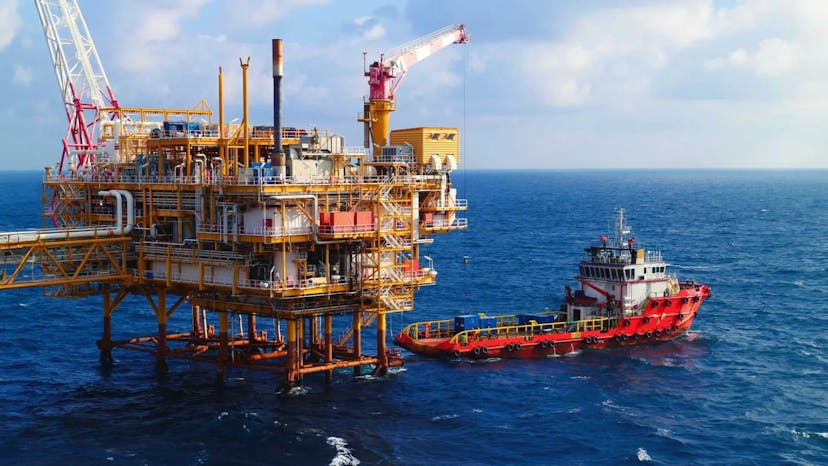How Cognite deployed a virtual flowmeter to advance well monitoring for Aker BP

Key Takeaways
- Reduced the number of costly well-interventions to remove chalk obstructions.
- Reduced nonproductive time and increases overall well productivity as chalk influx is better prevented.
- Monitor production and optimize operations through always valid well rates for oil, gas, and water.
Aker BP deployed Turbulent Flux’s virtual flowmeter on a challenging reservoir to mitigate chalk influx, using Cognite Data Fusion to power the solution and visualize the live data.
Limited access to the real-time status of the flow creates challenges
Production optimization is crucial, especially for complex subsea tie-backs and wells producing from challenging reservoirs. Over the last decade, Aker BP has worked hard to maximize production from the fractured chalk reservoir at the Valhall oil field in the North Sea. The high porosity and low permeability result in an extremely high risk for chalk influx that causes significant production losses every year at Valhall.
At rapid drawdown and during large pressure fluctuations, the Valhall chalk is prone to become liquefied and flow into the wells. This can result in a partial or complete blockage of the oil flow. Aker BP subsequently loses production and must engage costly third-party services to clean-up the pipes.
Aker BP’s crews had limited access to the real-time status of the flow. Topside sensors might alert to changes in pressure, but they did not provide enough insight to help engineers take meaningful actions in a timely way. Installation of a physical subsea meter to monitor the chalk influx would be prohibitively expensive and would require a production shutdown for the installation.
Ingest, contextualize and make data accessible through APIs
Aker BP uses Cognite Data Fusion to develop data-driven recommendation tools and applications for the production staff, leveraging tools for visual inspection, machine learning, and physics simulator.
The Turbulent Flux Virtual Flow Meter (VFM) combines physical modeling of the fluid flow with data analytics on sensor data (physical analytics). Using live sensor data to automatically calibrate the simulator results in a solution that quickly, and automatically, adapts to changes in inflow conditions from the reservoir to the well. This ensures a life-of-field valid simulator and offers a virtual window into the production system that continuously supplies gas, oil, and water flow rates.
The integrated cloud-based solution with CDF and the Turbulent Flux VFM is highly automated and scalable. The first VFM took only a few days to set up and deploy and provides Aker BP’s crew 24-hour access to more granular insights about the flow.
The crew can now understand how much they produce in each phase within a margin of error that works for production management and optimization. More importantly, they can detect chalk influx events in Valhall wells in the early stages, take actions, and gauge whether those actions work within minutes.
As Dmitry Shchekotov, Senior Petroleum Engineer from AkerBP puts it: “Well G9 Virtual Flow Meter will aid diagnosing well performance, including start-ups and events caused by water breakthrough and/or chalk influx.”
Increased insights into the fluid flow help the petroleum engineers and field operators to plan and make correct decisions. The impact is higher production and fewer mistakes. Real-time information about fluid flow enables better and faster decision-making.
The Turbulent Flux transient VFM solution is running on Aker BP’s Valhall field on the Norwegian Continental Shelf. Check out this video to see how it works!
See Cognite Data Fusion® in action
Get in touch with our product experts to learn more and identify quick wins